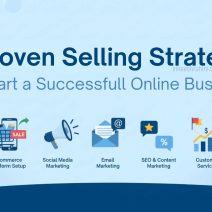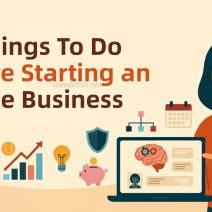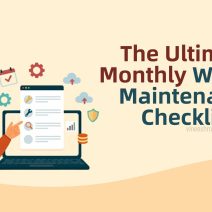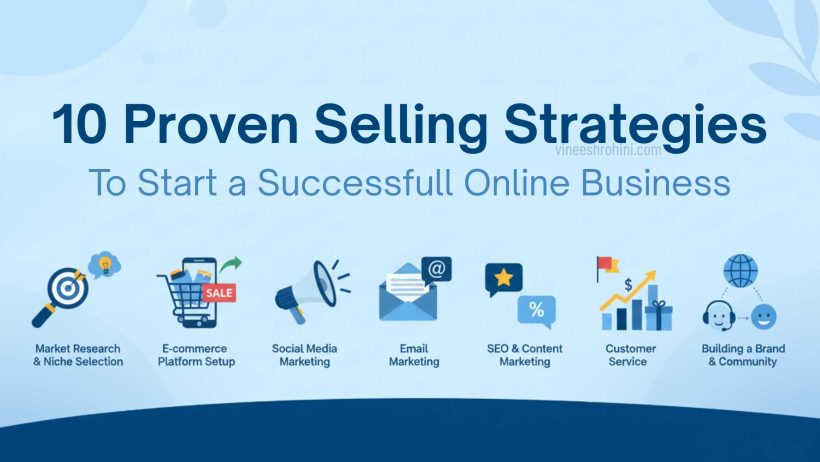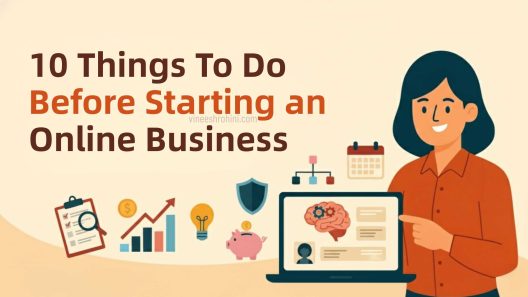10 Proven Selling Strategies : Starting an online business in 2025 has never been more accessible, but it has also never been more competitive. With millions of entrepreneurs, small business owners, and digital creators moving into eCommerce and digital services, the online market is booming — and only those with the right selling strategies survive. Gone are the days when simply launching a website was enough to attract buyers. Today, success in online business requires a mix of digital marketing intelligence, consumer psychology, automation, and strong relationship-building. Whether you’re starting an eCommerce store, launching a course, or promoting services, mastering the right selling approach will determine your long-term success.
Table of Contents
In this comprehensive guide, we’ll explore the 10 most effective selling strategies to start an online business, along with actionable insights, examples, and implementation tips to help you build a profitable brand in the digital economy.
1. Identify and Understand Your Target Audience

Before you start selling, you must know who your ideal customer is. Selling without understanding your audience is like shooting arrows in the dark — you might hit something, but you’ll miss most of the time. The first rule of digital selling is clarity: who your customers are, what problems they face, and how your product or service can solve them.
How to identify your target audience:
- Define demographic details: Identify age, gender, income level, and location of your audience.
- Understand psychographics: Learn their lifestyle, values, and preferences.
- Analyze behavior: Study how they interact online — what websites they visit, what social media platforms they use, and what content they consume.
- Research pain points: Discover what problems your audience faces and how your business can help them overcome those challenges.
Tools to help: G Analytics, FB Audience Insights, SEMrush, and Quora.
Example: A company selling home fitness equipment should target health-conscious working professionals aged 25–40 who prefer exercising at home due to convenience.
Pro Tip: Your product should be the solution to your audience’s most pressing problem. The better you understand your audience, the easier it becomes to position your offer effectively.
Also Read : 10 Things To Do Before Starting an Online Business : Comprehensive Guide 2025
2. Create a Strong Value Proposition
A value proposition defines why customers should choose you over competitors. It highlights what makes your product or service unique, relevant, and beneficial. In online business, where competition is fierce, your value proposition acts as your biggest differentiator.
Key elements of a compelling value proposition:
- Clarity: State exactly what you offer and how it benefits customers.
- Relevance: Ensure it solves a specific need or desire.
- Uniqueness: Highlight what makes you stand out — price, quality, support, or innovation.
- Proof: Use testimonials, data, or certifications to validate your claim.
Example: Apple’s value proposition isn’t just about technology — it’s about lifestyle, innovation, and seamless user experience.
Pro Tip: Test your value proposition across your homepage, landing pages, and ads. Consistency builds trust and recognition.
3. Build a Conversion-Optimized Online Presence
Your website is the digital foundation of your business. It’s your storefront, your brand’s identity, and your 24/7 sales representative. A visually appealing, easy-to-navigate, and fast-loading website can make the difference between success and failure.
Key components of a high-converting website:
- User Experience (UX): Ensure your site is mobile-friendly, well-structured, and intuitive.
- Fast Loading Speed: Use optimized images and lightweight design; websites taking longer than 3 seconds risk losing customers.
- SEO Optimization: Include relevant keywords in titles, meta tags, and content to rank on G.
- Call-to-Action (CTA): Clear CTAs like “Buy Now,” “Get Started,” or “Learn More” should be visible throughout the site.
- Trust Signals: Add SSL certificates, reviews, return policies, and contact information to boost credibility.
Tools to Use: WordPress, Shopify, WooCommerce, G PageSpeed Insights, and Ahrefs.
Pro Tip: Invest in professional design and copywriting — your website should not only look good but also communicate trust and authority.
4. Develop a Content Marketing Strategy

Content is the backbone of modern selling. Instead of aggressively pushing products, businesses today attract buyers by providing valuable and relevant content. This strategy builds trust, educates the audience, and positions your brand as an authority.
Effective types of content for online businesses:
- Blogs: Write informative articles that answer customer questions and provide insights about your niche.
- Videos: Showcase tutorials, testimonials, and explainer videos to demonstrate your product’s value.
- E-books and Guides: Offer free downloadable resources in exchange for emails.
- Podcasts: Engage with your audience through stories and discussions related to your industry.
- Infographics: Present complex data in visually digestible formats.
Example: HubSpot’s success stems from years of valuable, free content that educates business owners about digital marketing.
Pro Tip: Follow the 80/20 rule — provide 80% value-driven content and only 20% promotional material. Customers should see you as a helpful guide, not just a salesperson.
5. Optimize Your Sales Funnel
A sales funnel is the process that guides potential customers from discovering your brand to making a purchase. Optimizing each stage of the funnel ensures that you convert more visitors into paying customers.
Stages of a sales funnel:
- Awareness: Capture attention through ads, blogs, and social media.
- Interest: Offer valuable content to engage visitors.
- Decision: Present irresistible offers, testimonials, and guarantees.
- Action: Simplify the checkout or sign-up process.
- Retention: Keep customers engaged through follow-ups and loyalty programs.
Tools for Funnel Management:
- ClickFunnels: For creating landing pages and lead magnets.
- Mailchimp or HubSpot: For automated email marketing.
- G Analytics: For tracking conversion rates.
Pro Tip: Use A/B testing to identify which funnel elements — headlines, visuals, or CTAs — perform best. Small improvements can significantly increase conversions.
6. Harness the Power of Social Media Marketing
Social media has transformed from a communication tool to a business powerhouse. It allows brands to reach billions of potential customers directly, build communities, and increase sales through authentic engagement.
Effective social media strategies for selling:
- Platform Selection: Choose platforms where your target audience spends time — Instafor visual products, LinkedIn for B2B, YT for tutorials.
- Consistent Branding: Maintain a unified tone, color scheme, and message across all platforms.
- Storytelling: Create emotional connections with your audience by sharing authentic stories behind your brand.
- Engagement: Reply to comments, conduct polls, and host live sessions to build trust.
- Paid Campaigns: Use targeted FB, Insta, or G Ads to reach specific demographics.
Example:
D2C brands like Mamaearth and Boat in India used influencer marketing and Insta reels to dominate the online retail space.
Pro Tip: Social media is about building relationships — not just posting ads. Engage, listen, and respond to create genuine connections.
7. Build an Email Marketing System for Retention

Email marketing remains one of the most effective tools for online selling. It allows you to connect directly with customers, nurture relationships, and encourage repeat purchases.
How to build an effective email marketing system:
- Lead Generation: Offer free resources, discounts, or newsletters to capture emails.
- Segmentation: Group your subscribers based on their interests and behavior.
- Automation: Set up automated sequences for welcome emails, cart reminders, and re-engagement.
- Personalization: Address customers by name and recommend products based on previous purchases.
- Analytics: Track open rates, click rates, and conversions.
Tools to Use: Mailchimp, ConvertKit, Klaviyo, or ActiveCampaign.
Pro Tip: Keep emails short, visually clean, and valuable. Avoid over-promotion — the goal is to build long-term trust.
8. Leverage Influencer and Affiliate Marketing
Influencer and affiliate marketing are modern word-of-mouth techniques. They combine authenticity with reach, helping your brand access new audiences through trusted voices.
Influencer Marketing:
- Identify niche influencers: Choose creators who align with your brand values.
- Focus on micro-influencers: Smaller influencers often have higher engagement and lower costs.
- Collaborate authentically: Allow influencers creative freedom to maintain audience trust.
Affiliate Marketing:
- Set up affiliate programs: Provide partners with unique tracking links.
- Offer attractive commissions: Motivate affiliates to drive more conversions.
- Monitor performance: Use analytics to track affiliate-driven sales.
Example: Beauty brand Sugar Cosmetics expanded its reach in India using micro-influencer campaigns on Insta and YT.
Pro Tip: Long-term collaborations perform better than one-off promotions. Build partnerships that align with your brand’s mission.
Buy Now : Ecommerce Website
9. Offer Personalized Experiences and Incentives
Personalization is the key to modern online selling. Today’s customers expect brands to understand their preferences and offer tailored experiences.
Ways to personalize and incentivize sales:
- Personalized recommendations: Use AI or data tools to suggest products.
- Dynamic pricing: Offer special discounts to loyal or returning customers.
- Loyalty programs: Reward repeat buyers with points or exclusive access.
- Referral programs: Encourage word-of-mouth marketing through incentives.
- Seasonal offers: Align discounts with festivals or events.
Example: Amazon’s “Recommended for You” algorithm contributes to over 35% of its sales by personalizing product discovery.
Pro Tip: Personalization builds emotional connection. Customers are more likely to buy when they feel seen and valued.
10. Prioritize Customer Experience and Post-Sale Support

Customer experience is the ultimate selling factor. A smooth, pleasant journey — from product discovery to post-purchase — creates loyal customers who buy again and recommend your business to others.
Strategies to enhance customer experience:
- Responsive customer support: Offer live chat, WApp or email support.
- Easy returns and refunds: Build trust by simplifying policies.
- Follow-up after purchase: Ask for feedback or offer support materials.
- Engage your community: Create FB groups or loyalty programs to build long-term relationships.
- Deliver quality: Ensure your product meets or exceeds expectations.
Example:
Amazon Prime dominates not just because of pricing but because of exceptional convenience, customer service, and delivery experience.
Pro Tip: Customer retention is more profitable than acquisition. Focus on building lifetime relationships, not one-time transactions.
Bonus Strategy: Measure, Analyze, and Improve Continuously
No matter how effective your selling strategies are, constant improvement is key. Use analytics to measure performance, identify weak points, and adapt.
Key metrics to track:
- Conversion rate
- Customer acquisition cost (CAC)
- Return on investment (ROI)
- Customer lifetime value (CLV)
- Bounce rate and retention rate
Tools: G Analytics, SEMrush, HubSpot, and Meta Business Suite.
Pro Tip: Treat your online business like a living system — monitor, learn, and evolve continuously.
Conclusion

Starting an online business in 2025 is filled with opportunities, but success requires strategic selling. The digital market rewards businesses that combine creativity with data, empathy with efficiency, and consistency with innovation.
These 10 selling strategies — from audience research and value proposition development to content marketing, influencer partnerships, and customer retention — form the foundation of any profitable online venture. Selling online isn’t just about transactions; it’s about building trust, understanding your customers, and delivering value that keeps them coming back.
Buy Now : Ecommerce Website
The journey might seem long, but every step builds momentum. With focus, research, and persistence, your online business can grow into a recognized brand and a sustainable source of income in the thriving digital economy.
Disclaimer
This article is for informational and educational purposes only and should not be considered financial, legal, or business advice. Readers are advised to conduct their own research or consult professionals before implementing any strategies.
Keywords : 10 Proven Selling Strategies – 10 Proven Selling Strategies in 2025
